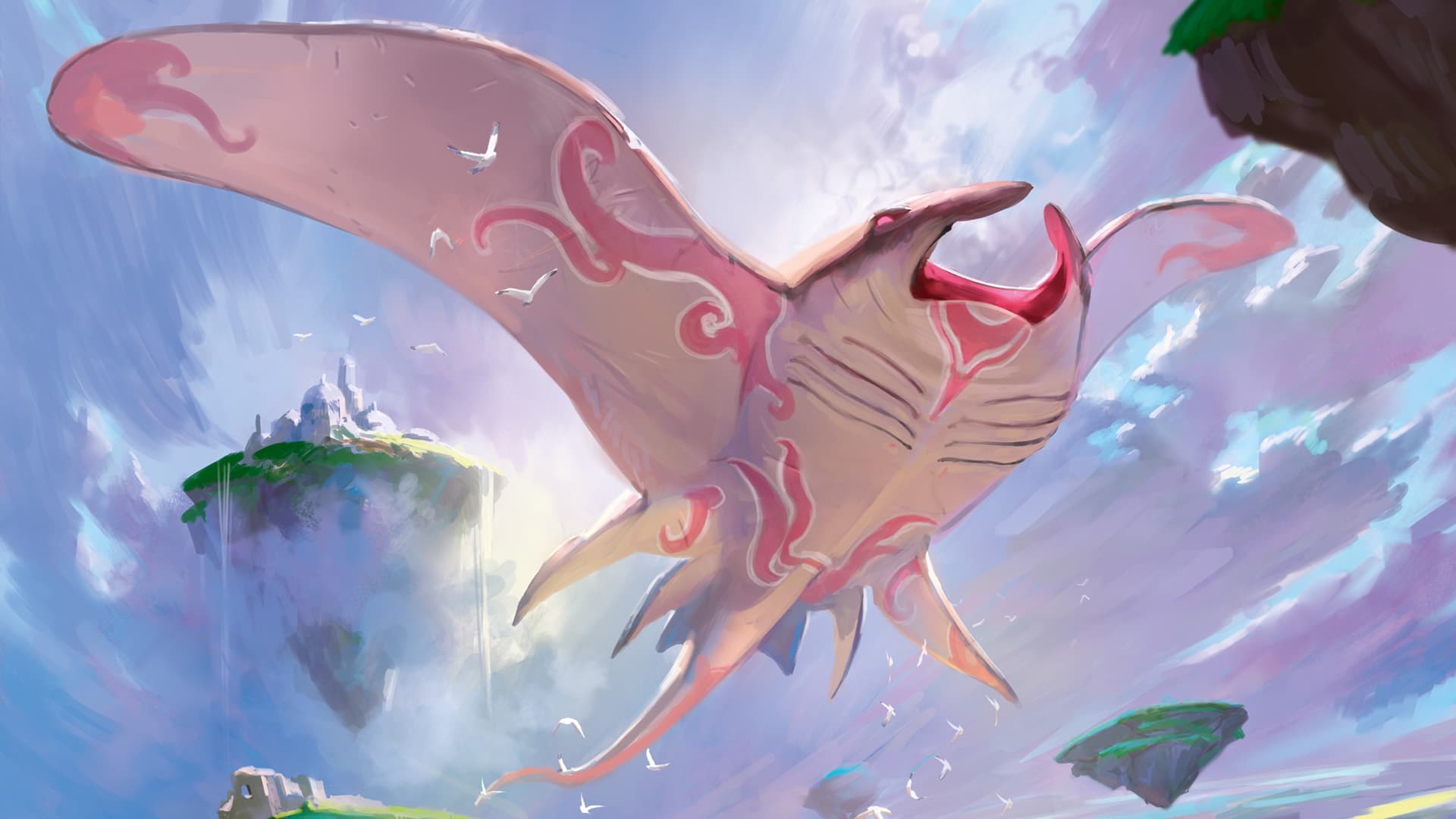
Halua

Lore
November 13th, 2025
Reading time
393 AC
MEMO: Leviathan – Manta Ray – Sea of Clouds
Introduction
Following the Althing and the summoning of the Bravos Fyrds, our researchers have compiled, for the hunter assemblies, all available data concerning the Leviathan known as “Halua.” The name is believed to be of Polynesian origin, roughly translating to “ambush” or a similar concept. According to reports, it was chosen in reference to the creature’s aggressive nature and its tendency to favor stealthy, surprise attacks.
Morphophysiological Study
Based on multiple eyewitness accounts, the Leviathan displays all the physical traits of a manta ray (Manta birostris/Manta alfredi). It has triangular pectoral fins and cephalic fins on either side of its mouth. Its eyes are set on the sides of its head, and two dorsal fins at the base of its tail grant it remarkable aerial maneuverability. Additionally, five pairs of gill slits line its ventral side. Its tail may lack an internal skeleton, yet it possesses enough musculature to serve as a powerful weapon when striking. The creature’s rectangular mouth faces forward and is lined with small, razor-sharp teeth—strong enough for the abomination to bite a destroyer-class structure clean in half.
Aside from its wingspan, which stretches nearly a full kilometer, this ray’s hide differs markedly from that of its oceanic kin. Its coloration and markings appear to shift depending on its emotional state. While the ventral surface is lightly pigmented, streaked with faint reddish patterns, the dorsal side glows a deep orange, traced with carmine whorls that twist and ripple like stylized clouds—or inkblots from a Rorschach test. The Leviathan moves by undulating its vast pectoral fins, propelling air backward for thrust, while its caudal fins provide steering. It is hypothesized that it ingests Aerolith to sustain flight, much as a chicken swallows pebbles to aid digestion. Despite its size, its speed is astonishing. Ongoing simulations aim to calculate its maximum velocity and model the turbulence it leaves in its wake.
Behavioral Study
Early theories interpreted Halua’s actions as territorial defense. However, our recent findings make it clear that the Leviathan is not bound to any single region or fixed habitat. It has been sighted across the Illyrian, Pelagonian, and Rhodopean Quadrants. Worse still, some lookout reports suggest it actively follows our fleets—as if hunting us. To date, four confirmed attacks have been officially logged, though Halua may also be responsible for the disappearance of two reconnaissance vessels that vanished without a trace several days ago. Its tactics are consistent: a lightning strike from concealment, a sudden ambush emerging from the cloud cover. Each assault is swift, devastating, and executed with unnerving precision.
What remains most troubling is the persistence of its aggression. Other recorded Leviathans, whether in these distant regions or closer to home, act from instinct: Kacchena is fiercely territorial; Garuda pursues airships that venture too close, viewing them as intruders. But Halua’s deliberate, methodical targeting of our vessels—civilian and military alike—sets it apart. Its assaults show no link to feeding behavior either, unlike Lucan, the Beetle Leviathan, which preys exclusively on Aerolith cargo. Halua attacks without discrimination or hesitation.
First Recorded Sighting
October 12, 393 – Illyrian Quadrant
Leviathan identified: Manta Ray, codename “Hahalua.”
Confirmed Attacks
October 17, 393 – Illyrian Quadrant
3rd Squadron
- Light human casualties
- Material damage
- Evacuation of the kelon carrier
October 20, 393 – Rhodopean Quadrant
8th Squadron
- Attack avoided
October 21, 393 – Rhodopean Quadrant
Forest colony
- Light human casualties
- Destruction of Axiom lumber mill and Muna ethological camp
October 23, 393 – Pelagonian Quadrant
Axiom quarry
- Heavy human casualties
- Destruction of mining facilities
- Loss of AES Sune and two reconnaissance airships
Among all Leviathans encountered within the Sea of Clouds, Halua represents the most immediate and catastrophic threat to our fleet. We therefore urge the utmost caution regarding this creature and its increasingly aggressive assaults. Furthermore, it is recommended that all civilian vessels travel under the protection of an armed escort specifically designated for that purpose.
The initial attacks by the Leviathan appear to have been test strikes—probing our defenses and searching for weaknesses.
—Scientific Committee of the Expeditionary Corps